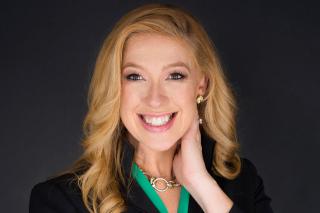Managing Director of The Institute for Inclusive Leadership at Simmons University, Susan Brady, explains the connection between leading inclusively and relational competence and gives voice to the best and worst practices she’s seen from leaders.
If we are to see more diversity and equity in leadership in our lifetime, leaders at all levels need to learn how to lead inclusively. But what does this really mean?
To be a leader is to be in relationship with others. Decades of research on the practice of leadership has unearthed no shortage of actions managers need to take in order to be successful. At the core of leading successfully — and largely agreed on by fellow experts — is the ability to be in relationship with others in an inclusive, self-aware, and inspiring way.
No matter the industry or work, great leaders manage their relationships well. What this means is that inclusive leaders multiply their impact with and through others, by tapping into and bringing out the unique gifts and talents of those around them. This requires actually getting to know people! I’ve seen CEOs and leaders at all levels whose lack of relationship skills causes them to lose key talent, decline their business or professional advancement, and sometimes to be excused from their role altogether.
Looking back at the best leaders I’ve worked with and for over the years, they share common traits. These people:
- Care: They take time to connect with people as individuals. Inclusive leaders learn and care about their people’s interests. They understand that people who feel their leader cares about them will show their appreciation in caring about the leader — and his or her agenda.
- Listen to hear, not respond: How many conversations and connections do we miss when we are focused on our own next statement? Leaders do not need to be the smartest person in the room. They need to be the best question-askers in the room. They take time to seek and understand the wisdom of others.
- Ask questions without an answer in mind: The questions inclusive leaders ask are designed to help them understand the other person’s point of view. Too often leaders ask a question, when their ulterior motive is to convince others that they know the way. (I call this “faux curiosity.” They weren’t really interested in answers other than their own to begin with.)
- Affirm, express gratitude, a lot: Strong leaders surround themselves with smart people, take their advice, and let their people know their impact is appreciated. They don’t wait to do this until a yearly review; they make time to do it regularly, in the moment.
- Understand what makes people strong: Good leaders ask their people what they like to do and think about how those interests and strengths can be used to help achieve organizational goals.
- Believe in the value the people around them bring: Inclusive leaders see the value each person brings to a team. They understand that there is never just one right way to do something. They look for what others see that they might not.
- Give control: Rather than force their agenda on others, relational leaders choose a strong team and give them freedom to bring their best thoughts and efforts forward to complete the mission.
- Correct when bias is seen: Inclusive leaders are tuned in to themselves and to others — not only welcoming feedback about their own blind spots, but calling out the bias or blind spots of others (for example, giving individual feedback when someone talks over or interrupts someone — even if unintentionally.)
If leaders who exhibit strong, caring communication and who give control to others strengthen relationships, what are the qualities that contribute to deteriorating relationships? What makes others report feeling “diminished” or “not good enough” or “not inspired” by a leader (the bi-products of non-inclusive leadership)? These leaders:
- Take little or no time to connect with the human being; they may even show how little they care by putting their own leadership agenda ahead of showing care to the person
- Ask questions, but don’t mentally stay around to hear the person’s answer
- Do not take time to understand other people’s points of view
- Surround themselves with smart people, but don’t take the advice they give
- Need to have full control, often insisting on showing people the “right way” (read “their way”) of doing something
- Reframe other people’s ideas to fit their agenda without seeking to understand the difference and power of alternative views
- Behave as if they are the most important person in the room (sometimes consciously and with arrogance and sometimes because of a lack of awareness)
These are just a few of the traits that I have seen encourage or derail inclusion — and ultimately the efficacy of leaders. These slights can be subtle or unintended, and as such require attention. After all, being in a healthy relationship with others is one long journey of closing the gap between our intention and our impact. As we look to be more inclusive and to close gender and other equity gaps in leadership, let’s self-examine and be sure we aren’t negatively impacting those with whom we work. Let’s be asking the question: how am I in relationship with others?
What behaviors have you seen that add or detract from a leader’s effectiveness?
This blog was originally published by McGraw-Hill, the publisher of Susan Brady's most recent book, Mastering Your Inner Critic.

